Choosing a sink for your kitchen can feel overwhelming. There are endless choices for style and design. Not to mention, the sink is one of the most used appliances in the kitchen. From hand washing to dish soaking, you will be using your sink A LOT. In this article, we will narrow it down to three easy decisions: choose a mount, choose a material, choose a style. When making these decisions, keep in mind the things most important to you: ease of cleaning, durability, overall appearance, costs involved, and functionality. Keep reading to find the perfect kitchen sink for you!

3 Simple Steps To Choose The Perfect Kitchen Sink
Choose a Mount
Undermount
Undermount sinks are popular in modern kitchens. When done correctly, the sink is installed beneath the countertop with mechanical anchors and a strong adhesive. You will want to use a professional installer so the sink does not leak and has proper support. This mount is a popular choice because it does not interrupt the design of your countertop, and allows for continuous flow from countertop to sink. The under-mounted sink also makes for easy kitchen clean up, you can easily sweep crumbs and water directly into the sink without worrying about build up on the edges. In general, undermount sinks are more expensive and can be harder to install. However, if you want to maximize countertop space this mount is an excellent choice as there is no “lip” or edge on top of the counter. Keep in mind, with this style, faucets will need to be attached to countertops or the wall.
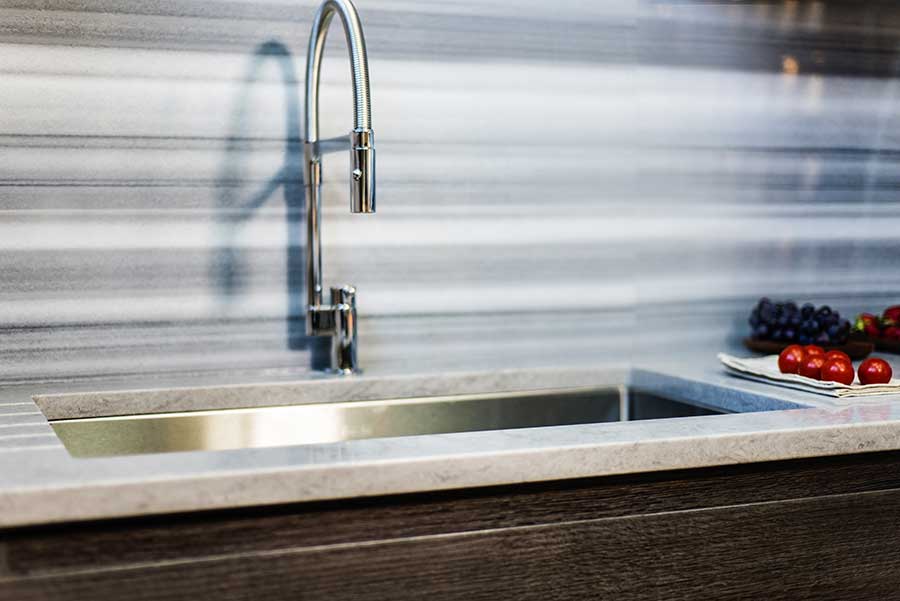
Overmount
Overmount sinks, also known as drop-in sinks, are “dropped-in” to a hole cut in the countertop and the countertop bears the weight of the sink. This allows you to use any material you choose for the sink. Your faucet can mount directly on the back edge of the sink, and doesn’t require an opening in the countertop. The size of an overmount sink is not constrained by the walls of your cabinets as its being installed from above. This means you have the ability to select a sink larger than the width of the cabinet below. An overmount sink is more cost-efficient and easier to install when compared to undermount. However, the lip or edge of the sink can collect bacteria and food particles and the design may not be as sleek looking as an undermount sink.
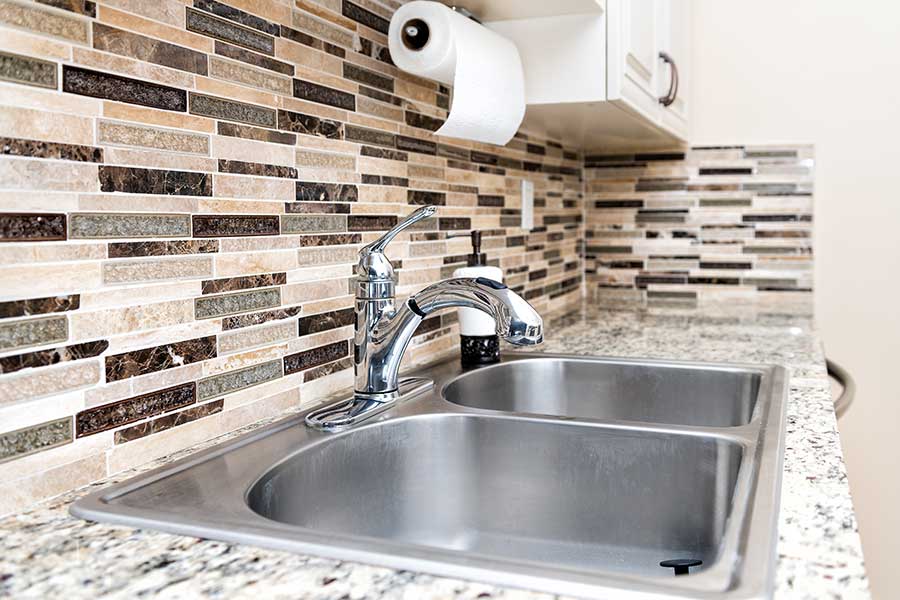
Choose a Material
Stainless Steel
Stainless steel is one of the most popular materials for a kitchen sink and is available for both overmount and undermount sinks. Stainless steel is durable – both heat and stain resistant – and easy to wipe clean. Stainless steel is a budget friendly solution, you can find quality stainless sinks that won’t break the bank.
One drawback to stainless steel is that it can be noisy when dishes and silverware are being tossed in. Thicker steel is typically less noisy and more durable. Another drawback to stainless is that it may scratch over time, and water marks are typically noticeable.
Stainless steel sinks are great option if longevity and cost-effectiveness are high on your list. However, they do require regular cleaning to avoid hard water stains and maintain their appearance.
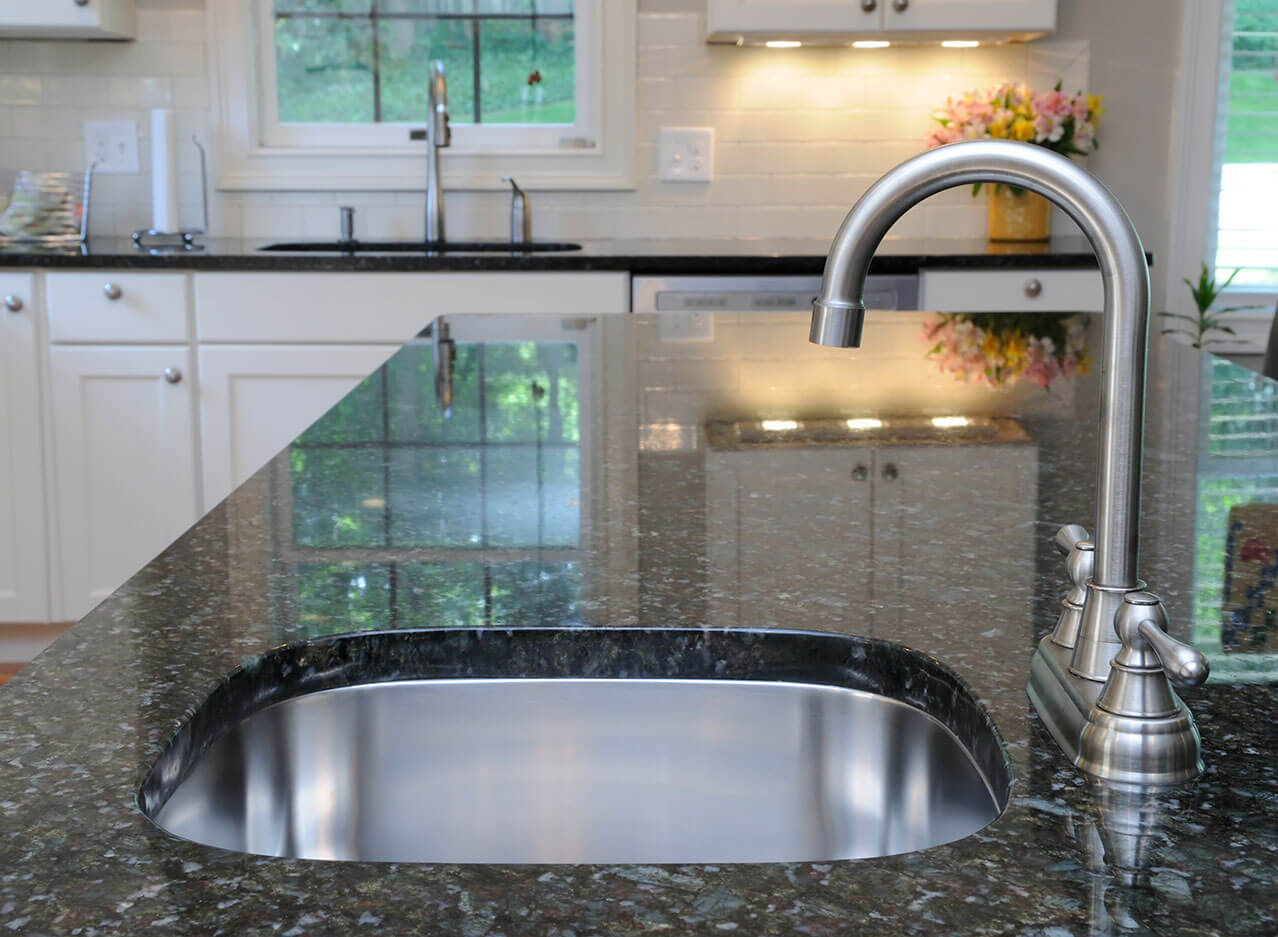
Cast Iron
Cast Iron sinks are created by casting iron and coating it in a heavy porcelain enamel finish. Cast iron sinks can have a vintage feel as they have been used in kitchens for decades. This enamel finish is very tough and makes the sink durable and resistant to stains and scratches. However, cast iron sinks can chip if the iron is exposed, leading to potential rust. This might not be the best option for busy families who may be tossing heavy pots or pans into the sink.
Fireclay
Fireclay is essentially white clay infused with glaze and heated to high temperatures to create a unique ceramic material. Over time they may require maintenance and re-glazing. Fireclay sinks are quite heavy and you will want to have them professionally installed, using additional supports. These sinks resemble cast-iron sinks but are more resistant to scratches and stains. Fireclay sinks are a very durable and rust-resistant but may crack or chip with enough weight or force.
Copper
This unique option is sure to be a focal point in your new kitchen. If you are going this route, make sure you choose a copper sink that is at least 99% pure copper. One of the best things about a copper sink is that copper naturally kills about 99% of germs and bacteria. So, clean up is fairly easy – just be sure to avoid harsh cleaning solutions. Copper is one of the more expensive options, but perhaps worth it if you are trying to create a certain aesthetic. Copper is more likely to show scratches and dents if you do not use proper care. As with stainless steel sinks, the thicker the gauge the more durable the sink will be.
Copper has a “living finish” meaning that the color and tones of your copper sink will continue to change and shift over time. This is known as the patina process. Certain materials can affect this process and strip the patina from your copper sink. Acidic foods, cosmetics, abrasive chemicals and even oil from your fingers. If you love the changing of tones in your sink, your only step to care for it is to clean it regularly with mild soap, warm water and a soft sponge. If you prefer more control over the patina process, you still clean regularly avoiding abrasive chemical cleaners and metal scrubbing pads.
You can take a few extra steps as well:
- Avoid allowing acidic foods to rest in the sink for long periods of time
- Avoid standing water in your sink for long periods of time, this is especially true of areas near the faucet or drain where water naturally pools
- Apply a coat of protection on your sink, many of which are available
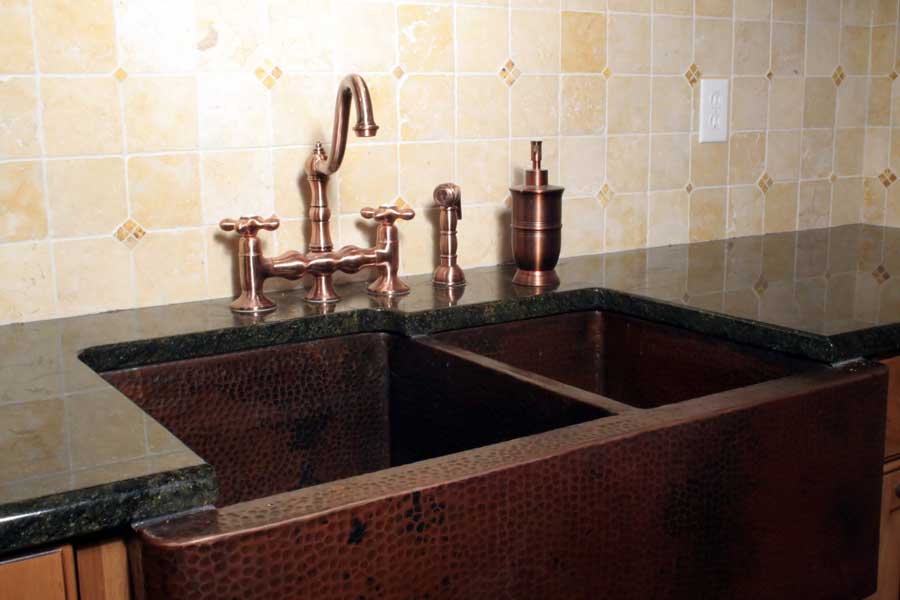
Granite Composite
Granite Composite sinks will not scratch like stainless steel. Granite composite is an extremely durable material and is easy to care for. They come in a wide range of colors and designs and have a timeless appeal. With granite composite you can select a color that very nicely compliments your countertop and cabinets for a seamless look although color choices are usually limited to a few.
You will want to ensure professional installation for your granite composite sink as well, it is very important to have the appropriate mount for the sink. Granite composite sinks are more expensive than stainless but are very long-lasting. One nice feature of granite composite is from a maintenance perspective, you rarely have to wipe down the sink to achieve a really clean look. Where stainless steel can easily show water marks, granite composite tends to look clean most of the time.
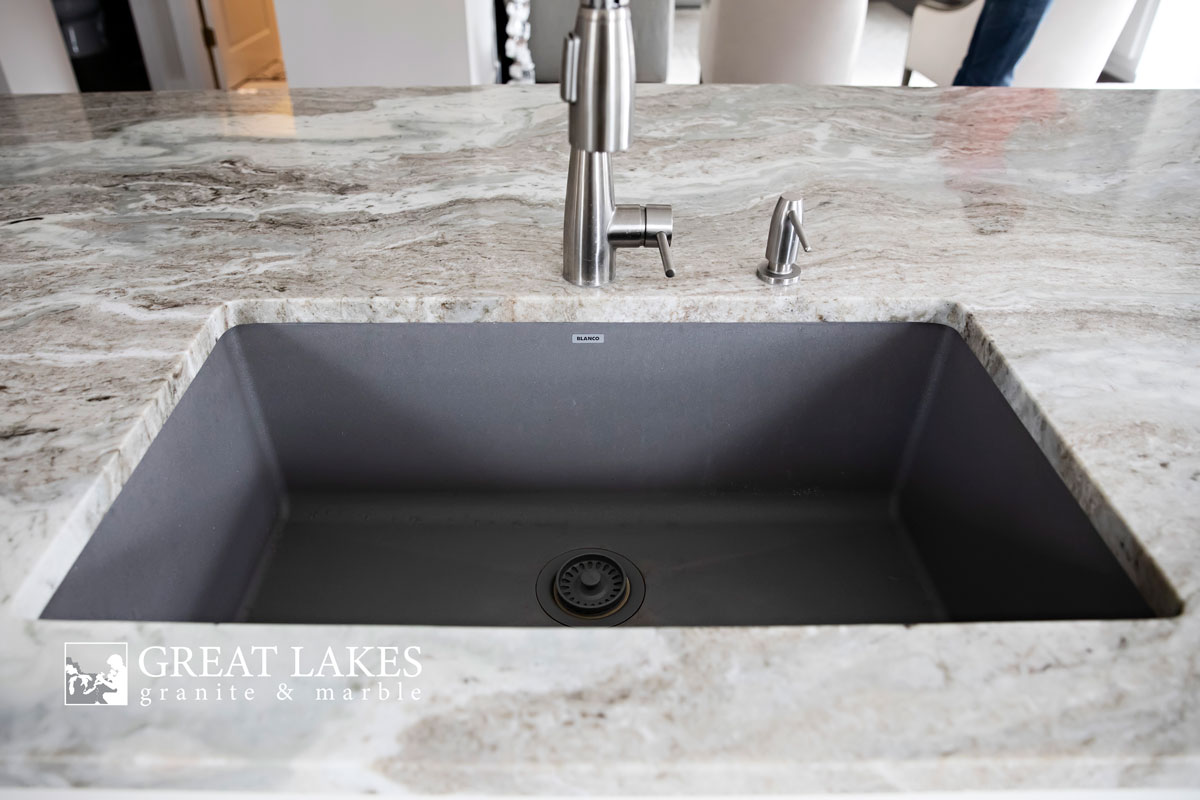
Quartz
Quartz is a man-made material created to look like natural stone. The mixture creates a non-porous surface that is great for the kitchen and comes in a wide variety of colors. It is easy to clean with warm soapy water; make sure to avoid abrasive cleaners or rough scrubbing sponges. A quartz sink will absorb more of the clink and clang sounds you get with stainless steel and copper sinks. However, this hard stone-like material is not friendly to dropped dishes so be careful with washing delicate china or glass. Depending on the style and design you go with, most quartz sinks are affordable.
Choose a Style
Double Basin
Double basin sinks are great for multitasking. Allowing one side to be used for general hand or dishwashing and one side for drying, soaking, food prep, etc. However, it can be difficult to wash large pans or serving dishes in a double basin sink, neither side is suitable for soaking a large pan or crockpot.
With a double basin sink, many people end up just using one side of their sink. So consider how you function in the kitchen on a daily basis and for food prep. Also, it’s important to remember that only one side of your double basin sink will have a garbage disposal. Double Basin sinks can be purchased in equal size bowls of unequal where one side is bigger or smaller than the other.
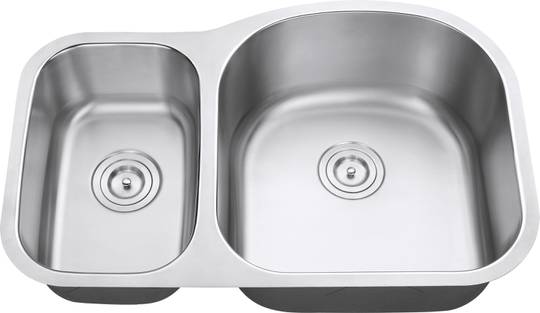
Single Basin
In a single basin sink, you can easily wash any large pan or pot and the garbage disposal will be able to get all the leftover food particles. A single bowl sink is typically large enough to hold all of the dinner dishes, and give you ample space for washing even the largest serving platters or pans. However, this may mean the dishes that are drying will need to sit on your countertop. One option is adding a removable basin for soaking dishes without taking up your entire sink. If soaking dishes and having a place for them to drip dry is a high priority for you, a double basin may be the better solution. Functionality of washing versus soaking and drying are the two main considerations when it comes to double versus single basin sinks.
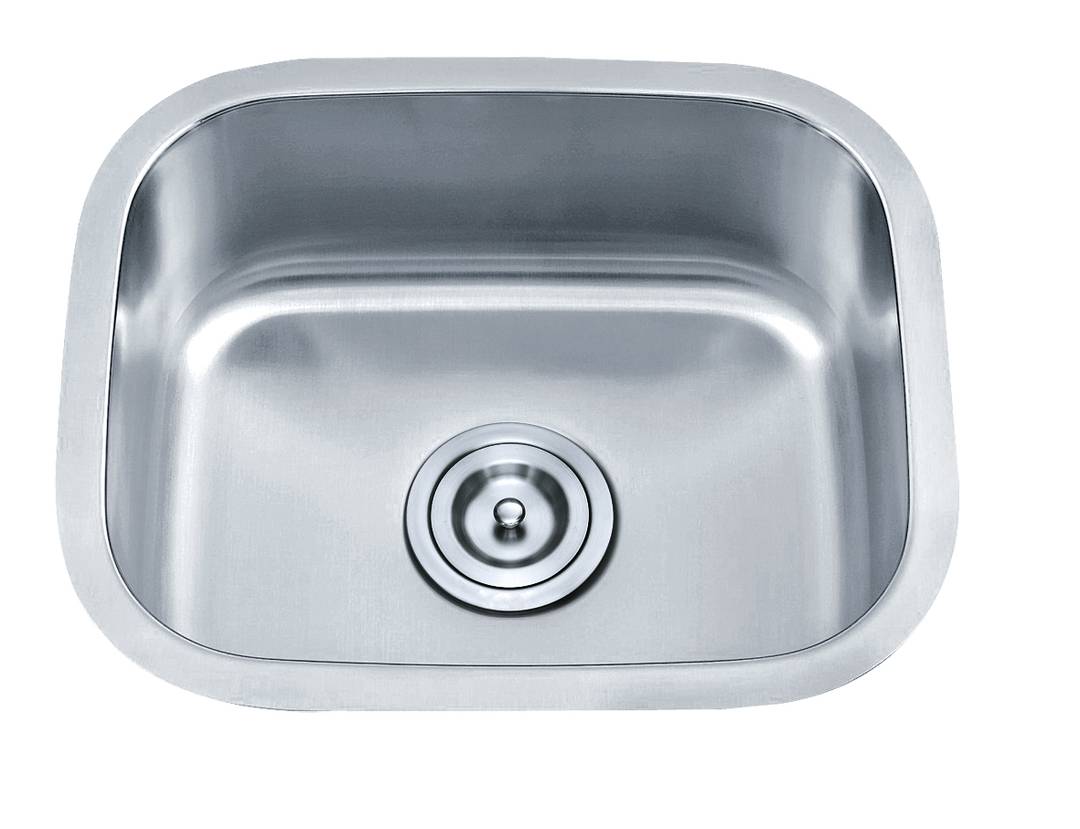
Farmhouse Sink
A farmhouse sink is usually a single basin sink. However, it is not your typical single basin sink. Farmhouse sinks are usually larger and deeper, sticking out 1-2 inches past your cabinets. If aesthetics are important to you, this sink is definitely going to be a focal point in your kitchen.
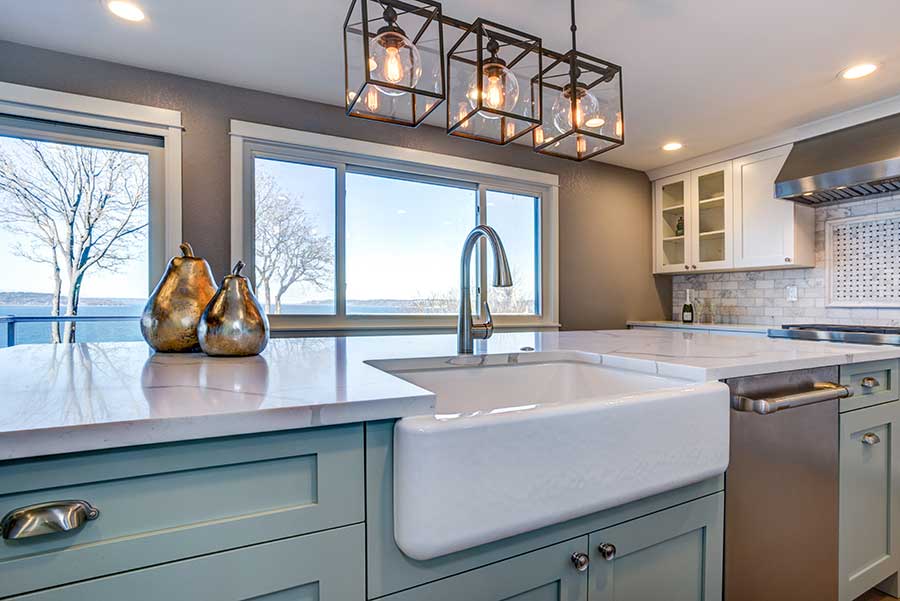
Workstation Sink
Workstation sinks are versatile, configurable, and can handle a wide variety of kitchen duties. Picture a typical sink with an integrated ledge for a variety of accessories to rest in, converting your sink area into a real workhorse.
A workstation sink has multiple accessories to allow you to wash, prep and chop food, clean up, dry dishes and more. The common accessories included in many workstation sinks are: drying rack, colander, cutting board, and bottom grid. These space saving sinks can help free up valuable real estate in the kitchen. For example:
- Turn your sink into a countertop with the cutting board accessory
- The drying rack offers a space to put clean dishes and keep them off your countertop
- The bottom grid allows you to stack dirty dishes in the sink while still allowing water and other waste to drain easily
- Minimize the need for storage space of separate cutting boards, colanders, and drying racks freeing up valuable square footage in the kitchen
- The deeper workstation sink allows you to place dirty dishes in the sink and cover them with the cutting board. When you are entertaining you can hide the mess from dinner until your guests depart.
Workstation sinks can help keep things separate and reduce the chances of cross contamination, keeping your kitchen sink more sanitary. You can defrost meat, wash fresh fruit and veggies and clean up dishes in the same sink at the same time utilizing the various accessories.
In other education pieces, we’ve discussed the care and maintenance of stone countertops. Specifically, acidic materials such as lemon, vinegars, etc. can easily etch or stain your countertop. We recommend using a cutting board with a well to minimize spillage onto your stone. Utilizing the workstation sink with the cutting board accessory, you would avoid the risk of these materials damaging your stone countertop.
Workstation sinks come in many different styles and sizes. There are options for single and double basin styles in various sizes. For finishes you can select stainless steel with a silver, copper, gold, or black finish. In quartz, you can select a variety of colors ranging from silver, white, black, mocha, or slate.
The real difference between a traditional sink and a workstation sink is the integrated ledge for your accessories, creating an improved flow between your sink and your countertop. Some sinks even offer a dual-tier ledge so accessories can slide above or below on another, creating different working levels.
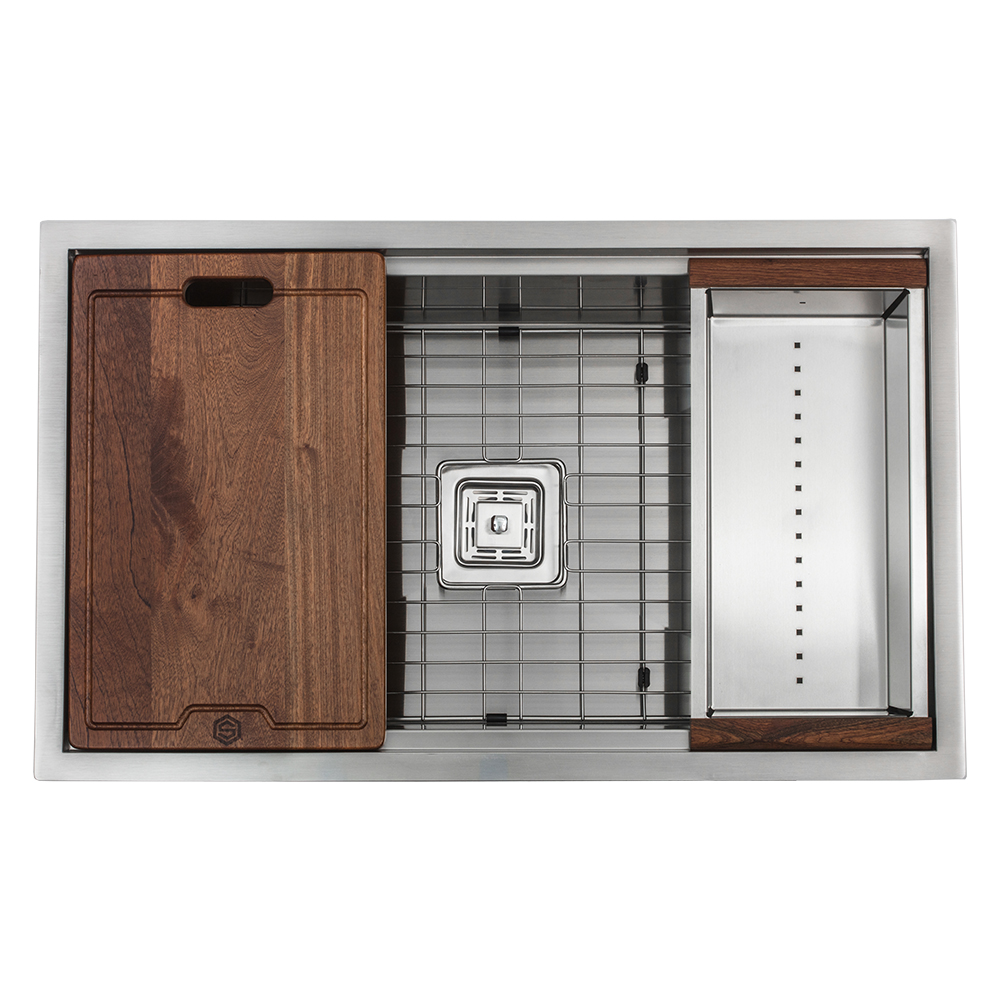
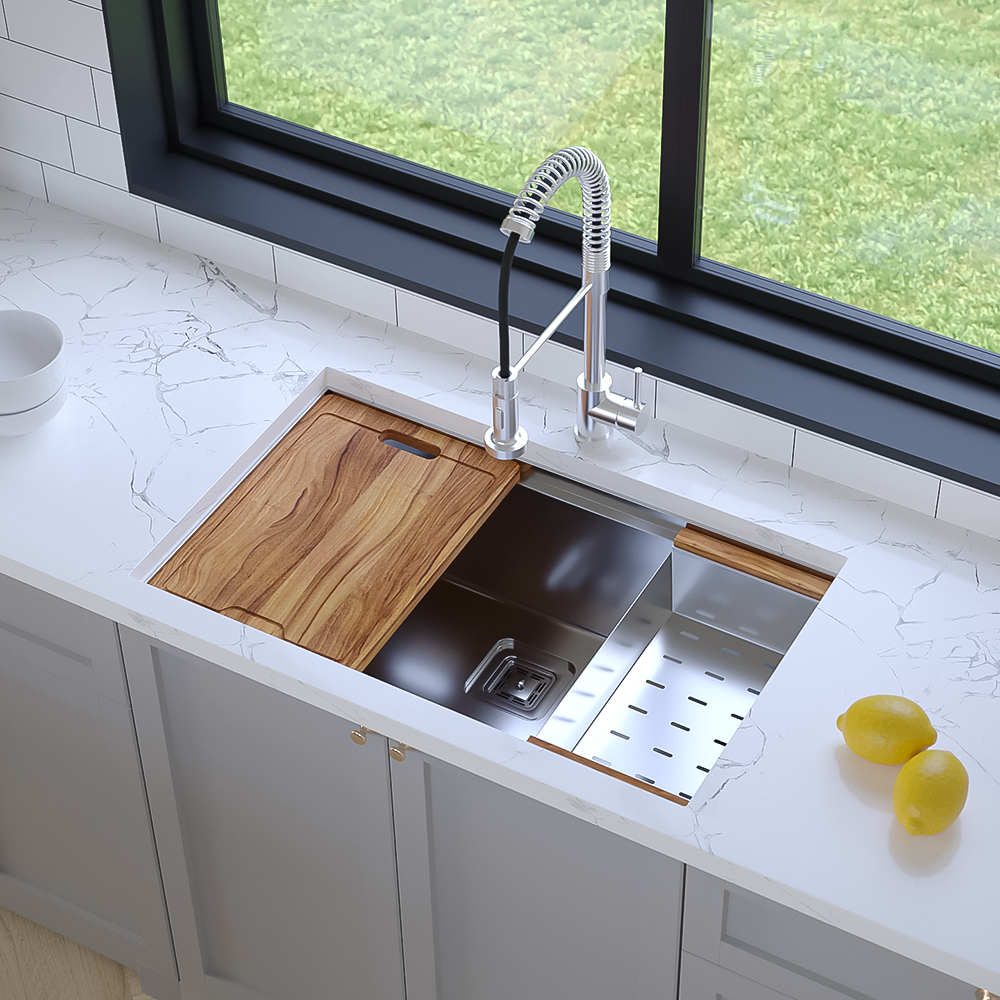
Conclusion
From choosing a mount, choosing a material and choosing a style, sink selection is key to your kitchen design. The sink is used multiple times throughout the day, from functionality to maintenance, this selection is an important one. Also, it is not something that is easily swapped out. When selecting an undermount or farmhouse sink especially, it is not a simple feat to switch out a sink later. Think through your food prep and washing habits as you make the right selection for your home.
